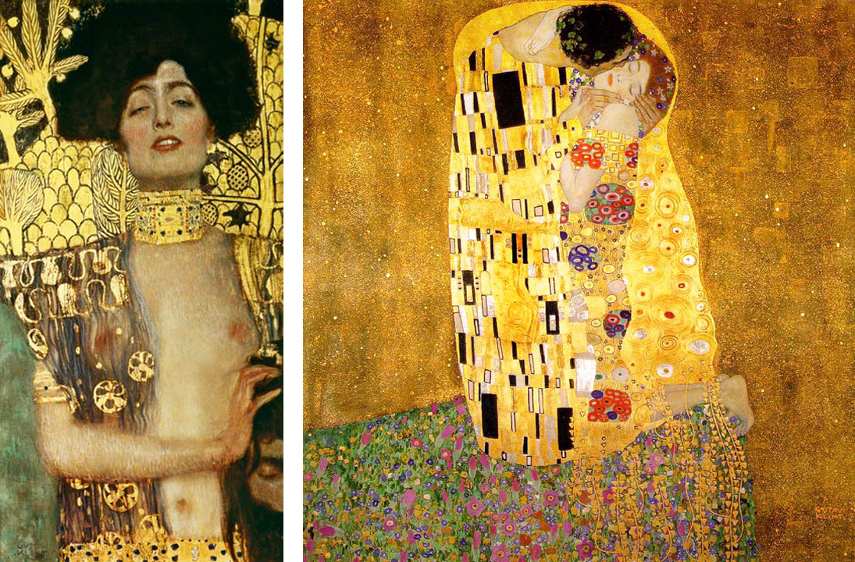I think everyone has heard of or at least seen a painting by Gustav Klimt but if you haven't, I'll tell you all about him and his artworks.
Gustav Klimt is an Austrian painter, he is considered not only one of the most controversial artists of his time but also one of the most successful, thanks to the bourgeois (upper class) who supported him and was constantly asking for commissions. Despite this, Klimt would describe himself as "not especially interesting as a person" which we can all agree he was wrong, I think most people consider him pretty interesting especially his painting style.
Gustav was born on July 14, 1862, he was the second child of seven children. His path in the arts started as a young child, thanks to his elementary teacher who recognized he was talented at drawing and encouraged him to go to the school of Applied Arts. Later on, Gustav at the age of fourteen took the tests and passed so he was given a scholarship. Moreover, at school, he was taught classical art and was able to participate in public contracts collaborating with his professors while he was still a student. After his graduation in 1833, he opened a studio with his brother Ernst and a mutual friend called Franz Masch. Together they called themselves the company of artists, and they specifically were dedicated to work on murals, painting in a historical style popular among Vienna's society, soon they were full of commissions painting for churches, theaters, public spaces. Their two most famous murals are at the Vienna Burgtheater and the ceiling at Kunsthistorisches Museum. In 1888, they received the Golden Order of Merit from Austro - Hungarian Emperor Franz Josef I.
In 1891 Ernst (Gustav's brother) got married to Helene Flöge, and Gustav painted a portrait of Helene's sister Emilie this was just the beginning of a lifelong friendship with Emilie, whose friendship will have an impact on the artist's style later on. The following year was a very tragic year as Klimt's brother and father died and he had to assume financial responsibility for his father's and brother's family. After these two meaningful losses, Gustav starts drifting from traditional art to a more personal art full of symbolism. Furthermore, in 1987 Klimt along with other like-minded artists formed a new organization called the Vienna Secession, this group rejected traditional art instead it focused on supporting non-traditional art. Also, this group had an official magazine called Ver Sacrum (Sacred Spring) for the first two years the magazine was published monthly exhibiting the work of a particular artist. The first Vienna Secession exhibition was the following year (1988), it was quite a successful exhibition lots of people attended, for this exhibition, Klimt painted the Greek goddess, Pallas Athena, for some people this painting marks the start of Klimt's Golden Phase.
In the early 1900s, Klimt was in the midst of his golden phase, creating some of his most iconic paintings, such as: "Judith" (1901), "Danae" (1907) and "The Kiss" (1908). What do they all have in common? Klimt uses women as his main subject matter some dressed, half-dressed or naked, he draws women in such a way that they look so delicate, I think it is part of what captivates you, also he uses a vast amount of gold leaf, there is no depth, they are flat a two-dimensional perspective, and the extensive use of patterns. In 1911, Gustav won first prize at an international exhibition in Rome, with the painting "Death and life" for Klimt this award was among his best achievements.
Sadly in January 1918, he suffered a stroke, therefore, he was hospitalized and contracted pneumonia while being there. He died on February 6, 1918.
Sources:

